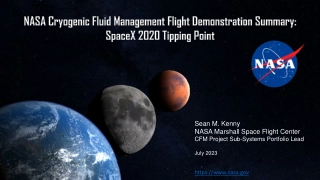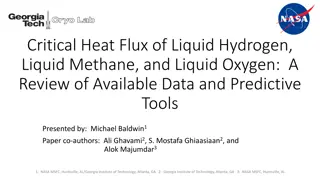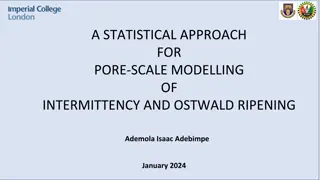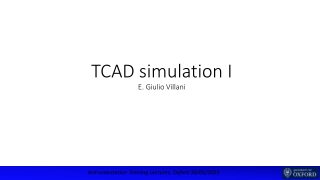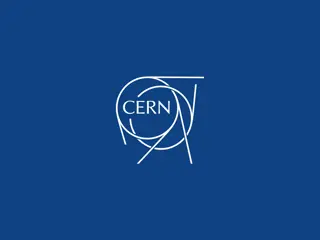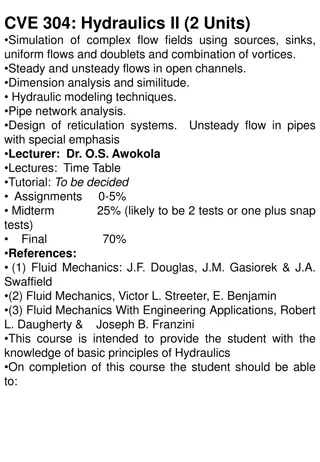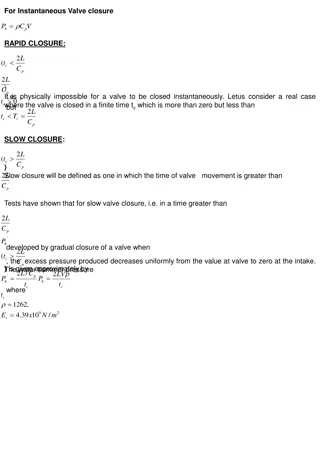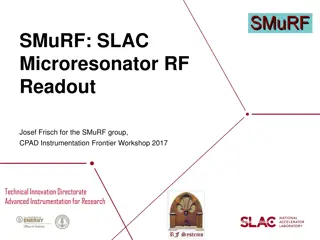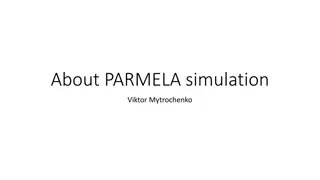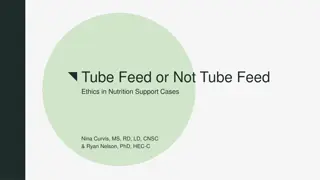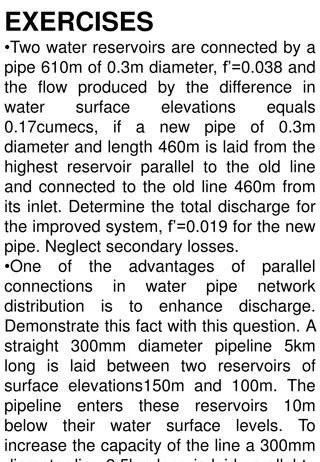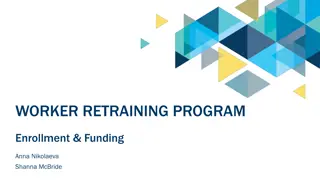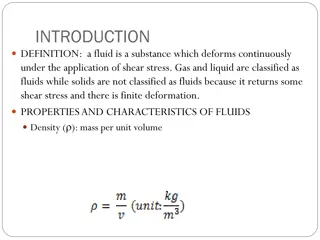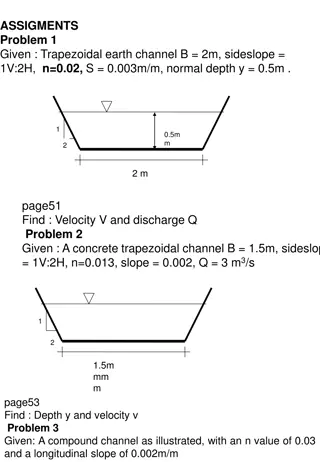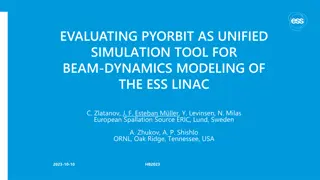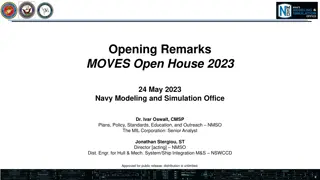Cryogenic Heated Tube Flow Boiling Experiments with Generalized Fluid System Simulation Program
Modeling of cryogenic heated tube flow boiling experiments of nitrogen and methane using the Generalized Fluid System Simulation Program. The research conducted by Michael Baldwin and co-authors from NASA MSFC, NASA GRC, and Purdue University explores the motivation, background, and findings related to cryogenic boiling heat transfer correlations in various applications including in-space tank-to-tank propellant transfer lines and cryogenic fuel depots.
Download Presentation
Please find below an Image/Link to download the presentation.
The content on the website is provided AS IS for your information and personal use only. It may not be sold, licensed, or shared on other websites without obtaining consent from the author. Download presentation by click this link. If you encounter any issues during the download, it is possible that the publisher has removed the file from their server.
Presentation Transcript
Modeling of Cryogenic Heated-Tube Flow Boiling Experiments of Nitrogen and Methane with the Generalized Fluid System Simulation Program Presented by: Michael Baldwin1 Paper co-authors: Andre LeClair1, Alok Majumdar1, Jason Hartwig2, Vishwanath Ganesan3, and Issam Mudawar3 1: NASA MSFC, Huntsville, AL 2: NASA GRC, Cleveland, OH 3: Purdue University, West Lafayette, IN
Agenda Motivation for heated-tube boiling modeling Background Flow boiling Purdue University universal cryogenic boiling heat transfer correlations Generalized Fluid System Simulation Program (GFSSP) Model Inputs Results Glickstein and Whitesides [1] CH4 Lewis et al. [2] N2 Qi et al. [3] N2 Conclusions 2
Motivation for Heated-Tube Boiling Modeling In-space tank-to-tank propellant transfer line Tank-to-pump propellant feedline Application: -Ascent and Descent Stages -Nuclear Thermal Propulsion (NTP) Application: -Cryogenic fuel depots Credit: ULA Informs insulation design and/or degree of propellant subcooling needed 3
Background: Flow Boiling 4 [4]
Background: Cryogenic Boiling Heat Transfer Correlations 1/2 Most popular thermal/fluid design codes use correlations based on non-cryogenic room temperature fluids for cryogenic two-phase flow modeling According to Mercado et al. [5]: Pre-CHF boiling models overpredict cryogenic data, best case MSA of 397% CHF models overpredict cryogenic data, best case MSA of 90% Post-CHF boiling models underpredict cryogenic data, best case MSA of 127% ?pred ?meas Median Symmetric Accuracy MSA = 100 exp Median log 1 Cryogenic boiling correlations exist in the literature, but most are correlated to a single data set and limited to there own set of hardware and operating parameters With numerous amounts of one-off correlations, which correlation should be used for the designing and analyzing of cryogenic propellant transfer? 5
Background: Cryogenic Boiling Heat Transfer Correlations 2/2 Starting in 2018, Purdue University in collaboration with NASA Glenn Research Center developed the first-ever set of universal cryogenic flow boiling correlations From over 53 independent reputable sources, carefully filtering of the data resulted in over 9,000 usable cryogenic data points Correlations developed: i Onset of nucleate boiling (ONB) Nucleate boiling Critical heat flux (CHF) Rewet temperature Inverted annular film boiling (IAFB) Dispersed flow film boiling (DFFB) Steady state two-phase pressure drop Fluids include: He, H2, Ne, Ar, N2, CH4 Most of the data are predicted within 25% 6
Background: Generalized Fluid System Simulation Program (GFSSP) System level CFD code developed at NASA in the early 90s Fluid Nodes: mass and energy equations are solved for pressures and enthalpies Fluid Branches: momentum equation is solved for flowrates Fluid network } Fluid Boundary Nodes Solid network } User subroutines are added for advanced physics Fluid-to-Solid Conductors: conjugate heat transfer Solid Nodes: solid energy equation is solved for wall temperature Solid-to-Solid Conductors 7
Model Inputs Mass flux Location of zCHF Inlet quality Inlet T and P Wall heat flux Two types of cases: 1. zCHF-predicted cases 2. zCHF-fixed cases (to ensure pre-CHF correlations are only applied to pre-CHF data points) 8
Results: Glickstein and Whitesides [1] CH4 ? ?sim,? ?exp,? ?exp,? MAPE =1 ? ? ? ?sim,? ?exp,? SMAPE =1 ? 1 2?sim,?+ ?exp,? ? GFSSP vs. test data: (a) Case 1 (all points) (b) Case 2 (pre-CHF points only with fixed zCHF) (c) Case 3 (post-CHF points only with fixed zCHF) 9
Results: Glickstein and Whitesides [1] CH4 GFSSP vs. test data: (a) Case 1 (high q ) (b) Case 2 (mid q ) (c) Case 3 (low q ) Note points near CHF affected by axial conduction Bump in the post-CHF region occurs where flow become single-phase vapor 10
Results: Lewis et al. [2] N2 ? ?sim,? ?exp,? ?exp,? MAPE =1 ? ? ? ?sim,? ?exp,? SMAPE =1 ? 1 2?sim,?+ ?exp,? ? GFSSP vs. test data: (a) Case 1 (all points) (b) Case 2 (pre-CHF points only with fixed zCHF) (c) Case 3 (post-CHF points only with fixed zCHF) 11
Results: Lewis et al. [2] N2 (Case 268) GFSSP overpredicted the location of CHF in 12 of the 16 cases considered (average error of 8.9% normalized by pipe length) GFSSP underpredicted the location of CHF in 3 of the 16 cases considered (average error of -7.0% normalized by pipe length) 12
Results: Lewis et al. [2] N2 (Case 327) GFSSP incorrectly predicts the type of CHF in only one case 13
Results: Qi et al. [3] N2 ? ?sim,? ?exp,? ?exp,? MAPE =1 ? ? ? ?sim,? ?exp,? SMAPE =1 ? 1 2?sim,?+ ?exp,? ? GFSSP vs. test data: (a) Case 1 (all points) (b) Case 2 (pre-ONB points only) (c) Case 3 (post-ONB and pre-CHF points only with fixed zCHF) 14
Results Qi et al. [3] N2 (Sample Case) GFSSP incorrectly predicted the occurrence of CHF in 11 of the 15 cases considered. 15
Results Qi et al. [3] N2 (Sample Case) GFSSP correctly predicted the occurrence of CHF in the one case it was observed. 16
Conclusions Using GFSSP with universal Purdue University cryogenic flow boiling correlations: Glickstein and Whitesides [1] CH4 has SMAPE of 14.5% Lewis et al. [2] N2 has SMAPE of 22.2% Qi et al. [3] N2 has SMAPE of 26.0% When predictive errors occur, the chief culprit is the type and location of the CHF CHF predictions are excellent for Glickstein and Whitesides [1] CHF predictions are excellent for Lewis et al. [2] (only one mis-prediction of CHF type) For Qi et al. [3] CHF is usually predicted but not observed. 17
References [1] GLICKSTEIN, MR, and RH WHITESIDES. "Forced-convection nucleate and film boiling of several aliphatic hydrocarbons(Heat transfer characteristics of several aliphatic hydrocarbons in nucleate and film boiling during forced flow in heated tubes)." (1967). [2] Lewis, James P., Jack H. Goodykoontz, and John F. Kline. Boiling heat transfer to liquid hydrogen and nitrogen in forced flow. National Aeronautics and Space Administration, 1962. [3] Qi, S. L., et al. "Flow boiling of liquid nitrogen in micro-tubes: Part II Heat transfer characteristics and critical heat flux." International journal of heat and mass transfer 50.25-26 (2007): 5017-5030. [4] Sherley, Joan E. "Nucleate boiling heat-transfer data for liquid hydrogen at standard and zero gravity." Advances in Cryogenic Engineering: Proceedings of the 1962 Cryogenic Engineering Conference University of California Los Angeles, California August 14 16, 1962. Springer US, 1963. [5] Mercado, Mariano, Nathaniel Wong, and Jason Hartwig. "Assessment of two-phase heat transfer coefficient and critical heat flux correlations for cryogenic flow boiling in pipe heating experiments." International Journal of Heat and Mass Transfer 133 (2019): 295- 315. 18



